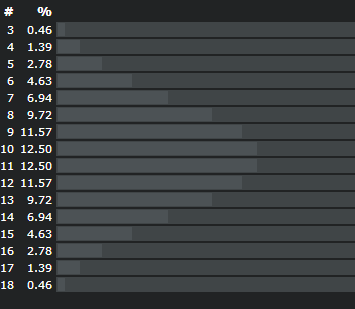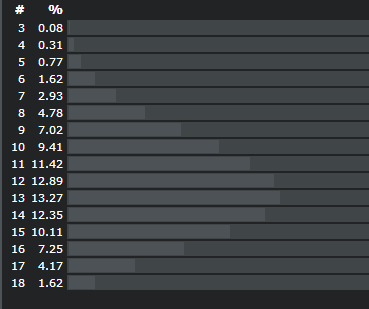Hello everyone,
I thought it would be nice to have a dice mechanic for 5e’s character creation with an output more similar to the point buy system, since the default dice mechanic leads to overall higher stats. This could be a system with the same output range as point buy as well as one that still offers the possibility of rolling very high numbers (16-18) but with a higher probability to roll very low than 4d6 drop lowest.
Do you already know of such a dice mechanic? Or could you maybe provide a source for the probabilities of a stat having a certain number in the point buy system, so as to make it comparable to 4d6 drop lowest? The latter would give a starting point to play around with dice.run in order to create a system as desired.
Thank you all very much in advance!

